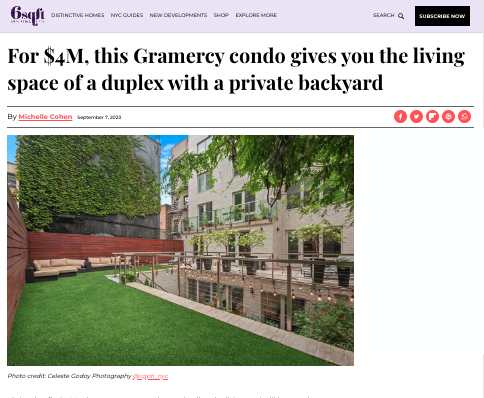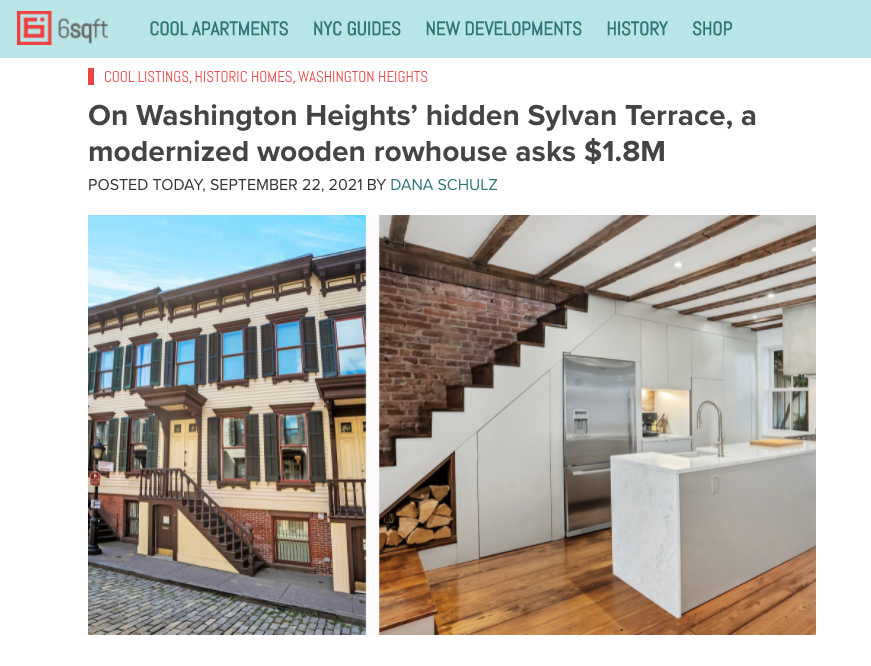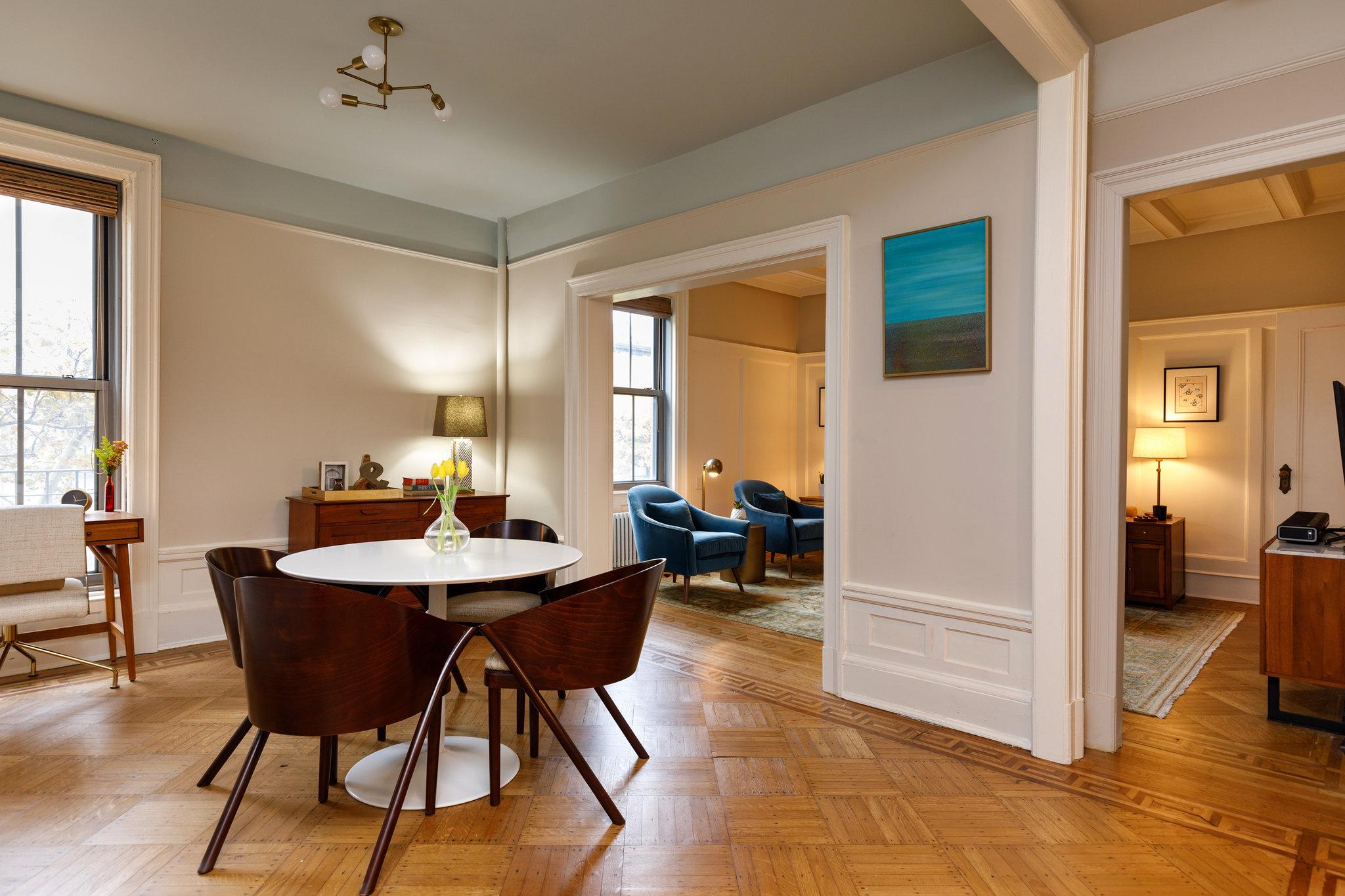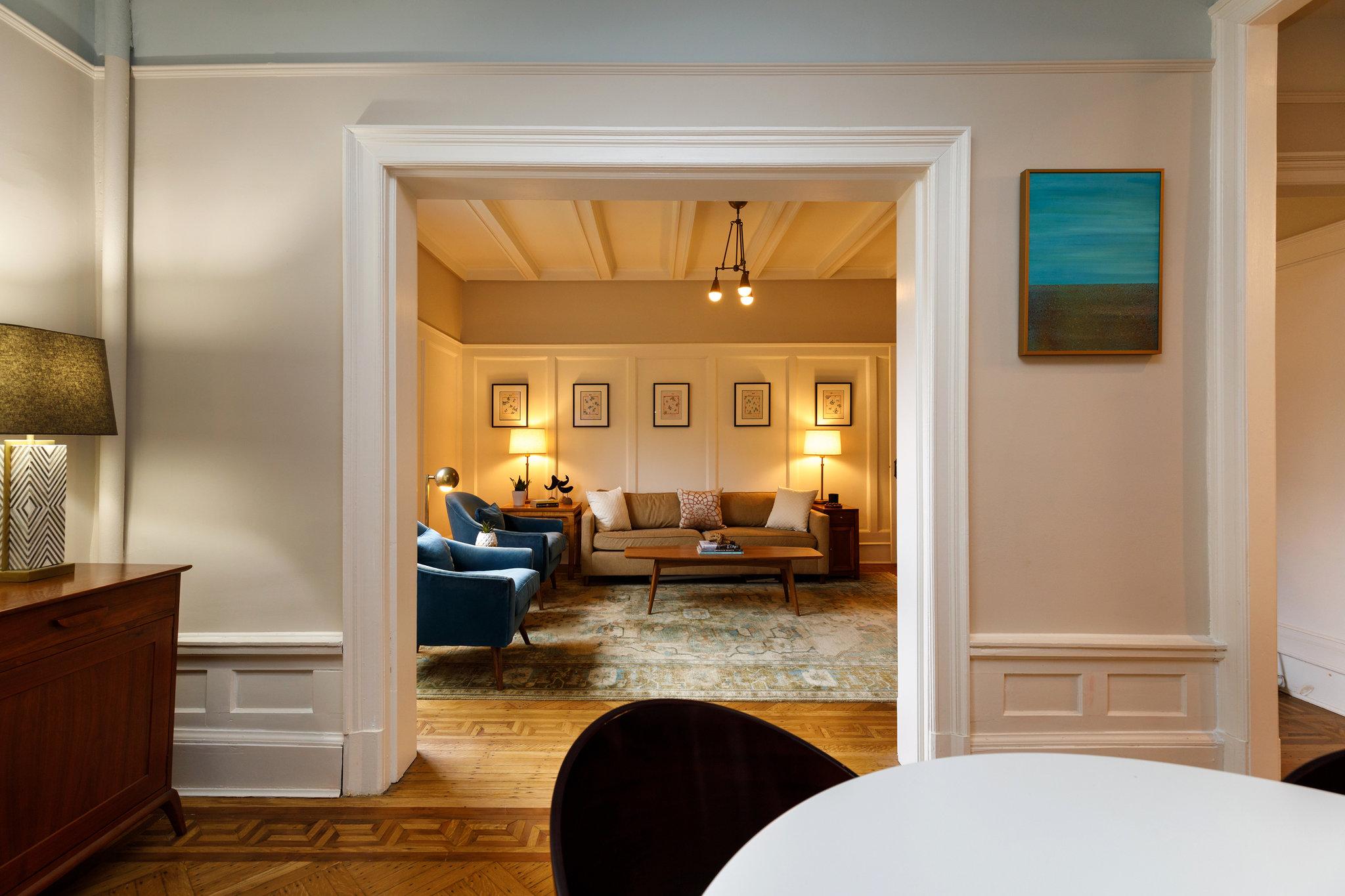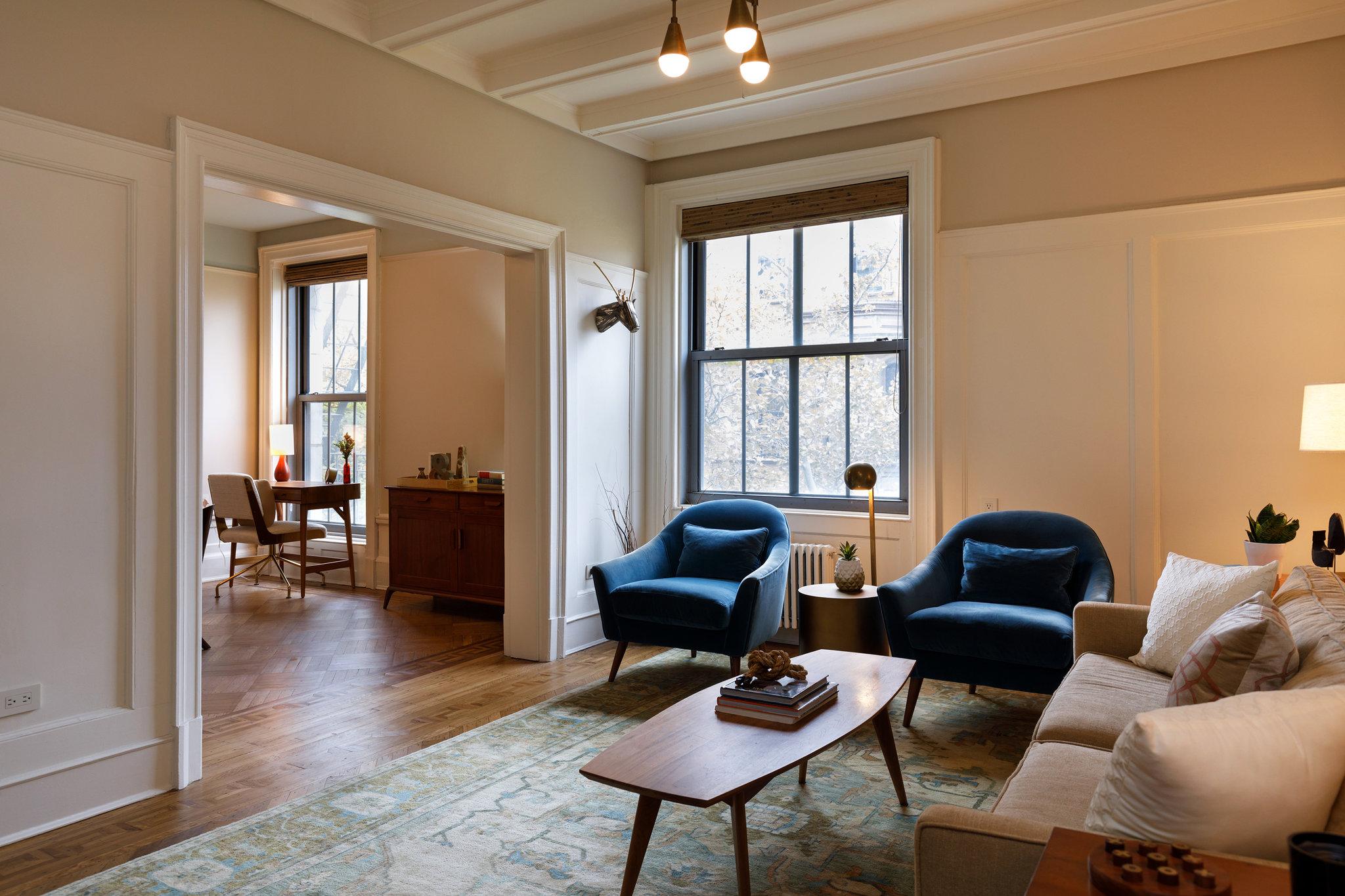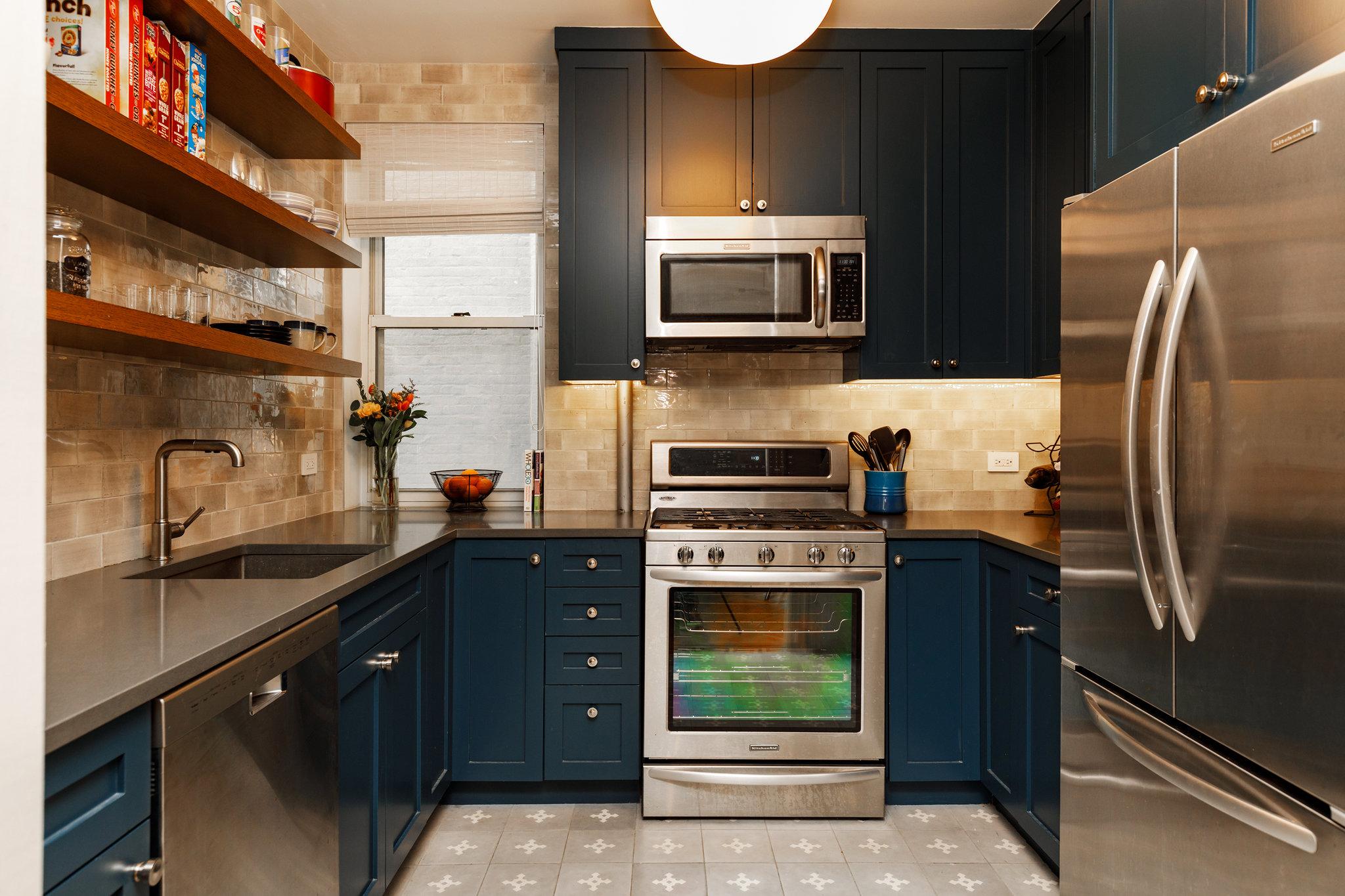As Seen on Brownstoner.com
As Seen on Brownstoner.com
Best Realtors™ in New York | Photos & Reviews
As Seen On 6sqft.com
As Seen On 6sqft.com
As Seen In The NY Post: Live on an off-grid NYC street for $1.79M
Get Your Own Slice of the Big Apple: Buying a House in Manhattan with Dylan Hoffman
Get Your Own Slice of the Big Apple:
Buying a House in Manhattan
by Lira Samanta
Posted onApril 19, 2021
5 min read
If you’re ready to buy a house in Manhattan, congratulations! Being able to afford a home in this swanky NYC borough means enjoying unparalleled access to the world’s preeminent nexus of culture, cuisine, architecture, and finance. Internationally renowned museums like the Met and MoMA, theater productions on and off-Broadway, and the culturally ubiquitous Central Park are all just a subway ride away for Manhattanites.
But getting to live in such a cultural epicenter means getting ahead of an exceptionally competitive real estate market. It’s no surprise that in a city with more millionaires than any other place in the world, the most desirable properties can go to contract in a matter of days. And if you’ve never experienced home shopping in a world of co-ops before, well, let’s just say it’s not as simple as finding and making an offer on your dream unit.
We interviewed real estate experts with decades of experience to help you win a bid on your own home in Manhattan’s hyper-competitive, fast-paced market.
Source: (Josephine Baran / Unsplash)
Know the price of a slice of a Manhattan apple
Despite the economic impact of the COVID-19 pandemic, the median home price in Manhattan was over $1.1 million in Q3 2020 — one of the highest in the country. Size, location, building type, and proximity to public transportation all factor into home prices.
Dylan Hoffman - COMPASS
Keep in mind that co-ops, which are housing cooperatives collectively owned by the residents, make up over 70% of the marketplace in 2021, while the rest of the housing stock is typically condos and townhouses.
“Condos cost 30% more on average than co-ops,” says Dylan Hoffman, a local agent with over 19 years of experience, who’s sold 37% more properties than the average New York agent. Hoffman notes that small studios in co-ops can start at $265,000 compared to $500,000 in condos. Studio apartments with an alcove for more space start at $650,000 in co-ops compared to $860,000 in condos. One-bedroom apartments in co-ops can start at $700,000 in co-ops compared to $1.2 million in condos.
Closing costs can range from 2.5% to as high as 6% of the sale price, so be sure to leave room in your budget for your attorney and real estate agent, as well as for filing fees and other required deposits.
Prioritize your metropolitan must-haves
Though cosmetic upgrades like fresh paint and new furnishings can be appealing, don’t forget to prioritize your requirements.
“I always tell buyers to look at what you can’t change,” says Hoffman.
“Are you facing an avenue or a street? Do you have a view of a beautifully manicured garden of the townhouse behind or of a brick wall? Are you across the street from a bus station or from a park?”
If you plan to use the subway to get around, make sure you also assess the distance of any homes you’re considering from your most frequently used subway lines.
Painting and refacing cabinets in your new home are doable, but if you’re eager to make bigger home improvements after your purchase, know that many buildings only allow a few units to be renovated at a time. Getting the necessary approvals can take up to four months, so plan for this ahead of time.
Inspections & attorneys
The standard contract for co-ops and condos specifies that the seller must provide a unit in working order, which means that heating and plumbing systems, as well as appliances, must be ready for use as soon as you move in.
Buyers of homes in smaller buildings (with between 5 and 10 units) pay a larger percentage to cover the cost of building upkeep, compared to those who purchase a home in a high-rise. Jean Chou, the principal attorney at JLC & Associates, advises her clients who buy in smaller buildings to schedule their own inspections as part of the homebuying process.
Hiring an attorney, which is a local convention in New York, eases the burden of buyer due diligence on an entire building’s amenities, including elevator updates and hot water service.
Attorneys also help you understand the scope of future upkeep. “Whenever we look at the building’s financials, we get a sense of whether or not the building has those extra reserves and if there is a significant capital improvement that will be needed,” says Chou.
Source: (Dollar Gill / Unsplash)
Challenges to buying your slice of the apple
Unlike other cities, the standard contract for co-ops and condos usually prevents homebuyers from having to worry about typical challenges like mold, termites, or other issues revealed by an inspection. However, cash offers are not uncommon in Manhattan, and knowing how to compete with these is key.
Sellers appreciate cash offers because of their faster timelines, as there’s no need to wait for a mortgage loan. But working closely with your agent allows you to determine what else matters to the seller, like the timing of the deal, or possibly the opportunity to rent back the unit for a few months while they figure out their own next move. A top agent will help you remain competitive even in a cash market.
Flood zones in the city?
You may be wondering what it means for you if your new home is in a FEMA flood zone.
Most homes sold in Manhattan are part of a larger building, and as the building itself may have flood insurance, you may not need coverage of your own. Your mortgage lender will assess the overall coverage and advise on whether you’ll need to purchase flood insurance, particularly if you’re buying a unit on the ground floor of a building.
How to make an offer
When it comes to making a competitive bid on a Manhattan home, “Price is king,” says Hoffman. He also emphasizes the importance of having a complete offer, including a completed REBNY financial form issued by the Real Estate Board of New York, and a preapproval letter from your bank.
Another step that can give you an edge is to write a personalized letter to the seller describing your dreams for your life in your new home. “Sellers love that,” says Hoffman. “They’re so emotionally engaged in their home — they have so many fond memories!”
A powerful letter outlining how you plan to carry on the traditions in this home that were dear to the seller in their years of life there can even help you win a bid against a buyer with a slightly higher offer.
Chou stresses the importance of assembling a good team early on, even before you make an offer: “Not just the right attorney but the right agent and the right mortgage banker or loan officer, ideally as soon as possible, even as you’re starting the search process.
“Things move really quickly here,” says Chou. “A lot of times, it’s not unusual for a homebuyer to submit an offer, and they’re being asked to wire over 10% within a week” for an earnest money deposit.
Be sure you have members on your team who you can trust on an expedited timeline so you’re not grappling for resources with only days left to spare.
Source: (Steve Strang / Unsplash)
The lay of the land in Manhattan
Where to start looking for a home in a borough that has over 50 historic neighborhoods? Some areas popular with home buyers in recent years are:
Upper East Side
The Upper East Side is known for upscale shops and restaurants, as well as the Museum Mile, a long stretch of museums including the Guggenheim and the Metropolitan Museum of Art.
Upper West Side
Bounded on the east by Central Park, the Upper West Side is a primarily residential area and is quieter than some other neighborhoods.
Gramercy
Gramercy is a quiet neighborhood with fewer tourists and is home to the exclusive Gramercy Park.
West Village
Beautiful brownstones and an abundance of cafés and bookshops characterize West Village, which was also the site of the famous Stonewall Uprising in 1969. The legendary Magnolia Bakery got its start here.
Chelsea
Chelsea boasts a plethora of art galleries. It is also home to High Line Park, a unique public space built on top of a historic, elevated rail line. And if you’re an avid concert-goer, Madison Square Garden is just a short walk away.
Greenwich Village
Film connoisseurs need look no further than the IFC Center, a theater that shows the best independent films from all over the world. Greenwich Village is also where the Washington Square Outdoor Art Exhibit takes place in the spring and fall.
NoHo
NoHo is a residential neighborhood with bohemian vibes, where celebrities like Cher and Britney Spears have had homes. Residents enjoy NoHo’s upscale bars, restaurants, and cafés.
SoHo
SoHo, known for its high-end restaurants and boutiques, is one of Manhattan’s premier shopping destinations. It’s also known as the Cast Iron District for its abundance of historic cast-iron buildings.
TriBeCa
A view of the Hudson River adds to this neighborhood’s appeal, as does the annual Tribeca Film Festival which takes place in the spring.
Source: (XPS / Unsplash)
Tips for buyers in Manhattan
Typically, the market is most active in the spring, followed by the fall after Labor Day. However, buying during off-peak seasons can pay off.
“I’ve sometimes had my busiest months in December,” says Hoffman. “I also don’t leave the city in June, July, and August. There could be a really good opportunity to have less competition because the seller who didn’t sell in the spring needs to move the property, so you might get it for a better price.”
Why use a top agent to buy a house in Manhattan?
Manhattan remains one of the most competitive housing markets in the U.S.; it’s consistently in demand.
A top agent will have the know-how to negotiate concessions in your contract, which in Manhattan apply almost exclusively to new developments. It’s possible to get as much as 25% off of the asking price in the form of HOA fees, transfer taxes, and storage lockers. Top agents help buyers save an average of $23,000 when purchasing a home. (That’s a lot of Broadway tickets you could be buying!)
Ready to begin your search? Find a top real estate agent in Manhattan through HomeLight to stay competitive in your Manhattan home buying search.
Header Image Source: (Florian Wehde / Unsplash)
Lira Samanta - Contributing Author
Lira Samanta is a freelance writer specializing in creative writing, personal motivation, and technology topics. She spends a lot of her spare time curating her Airbnb wishlist and dreaming about building her own She Shed. Using her economics and data science chops to study trends in real estate prices, she is always excited to find a great deal.
As Seen On Brownstoner.com: Flatbush Standalone With Parking, Stained Glass, Built-ins Asks $2 Million


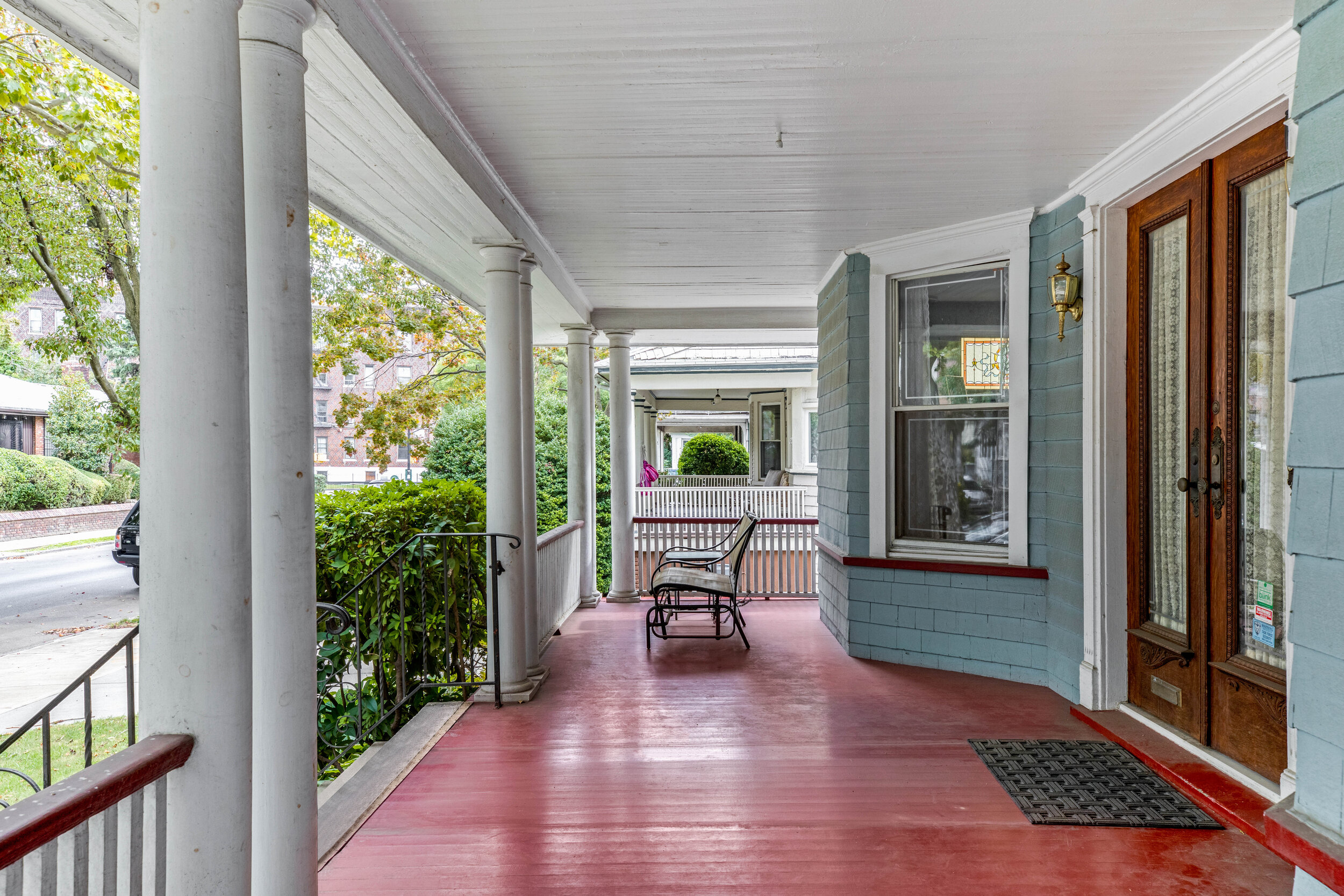

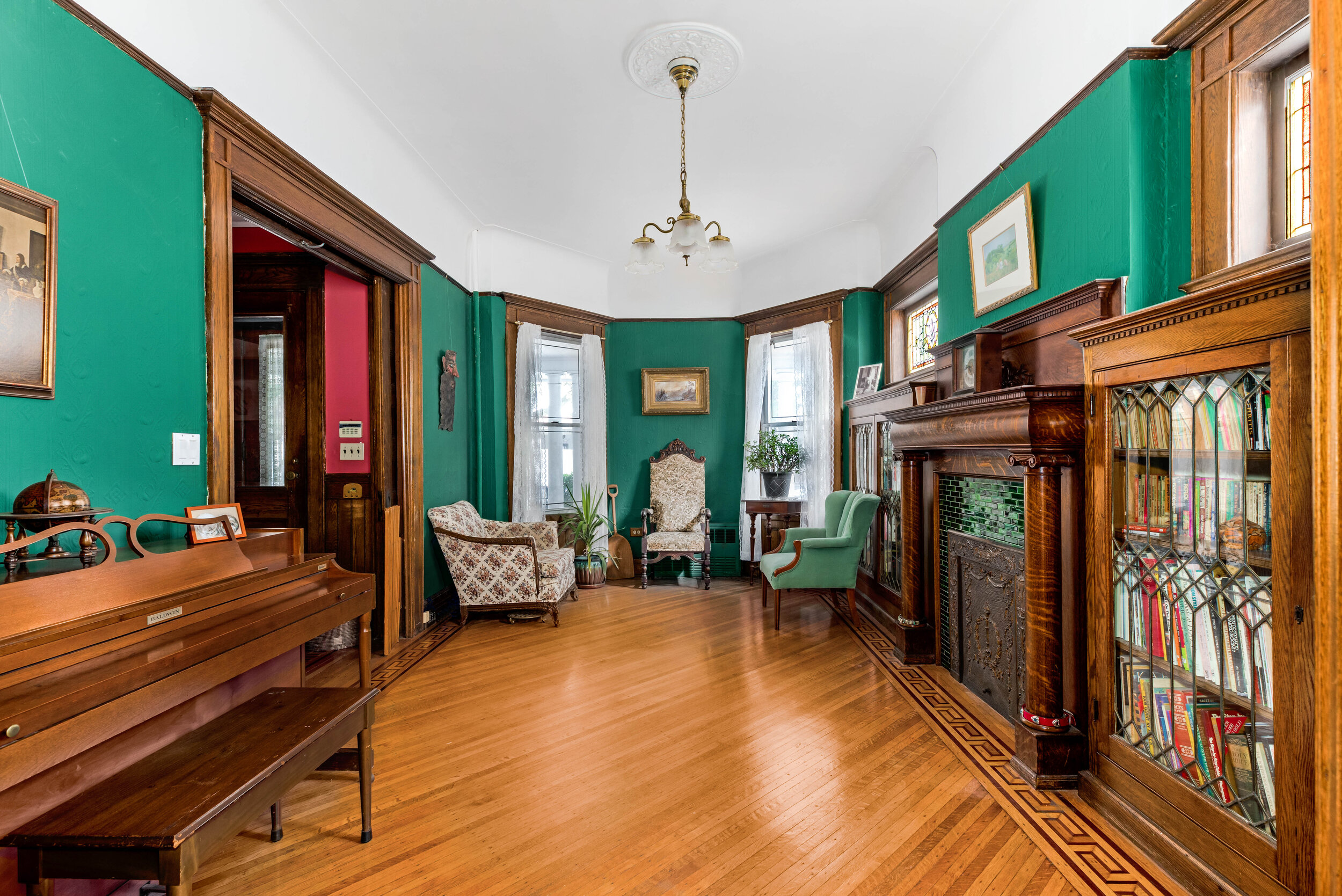






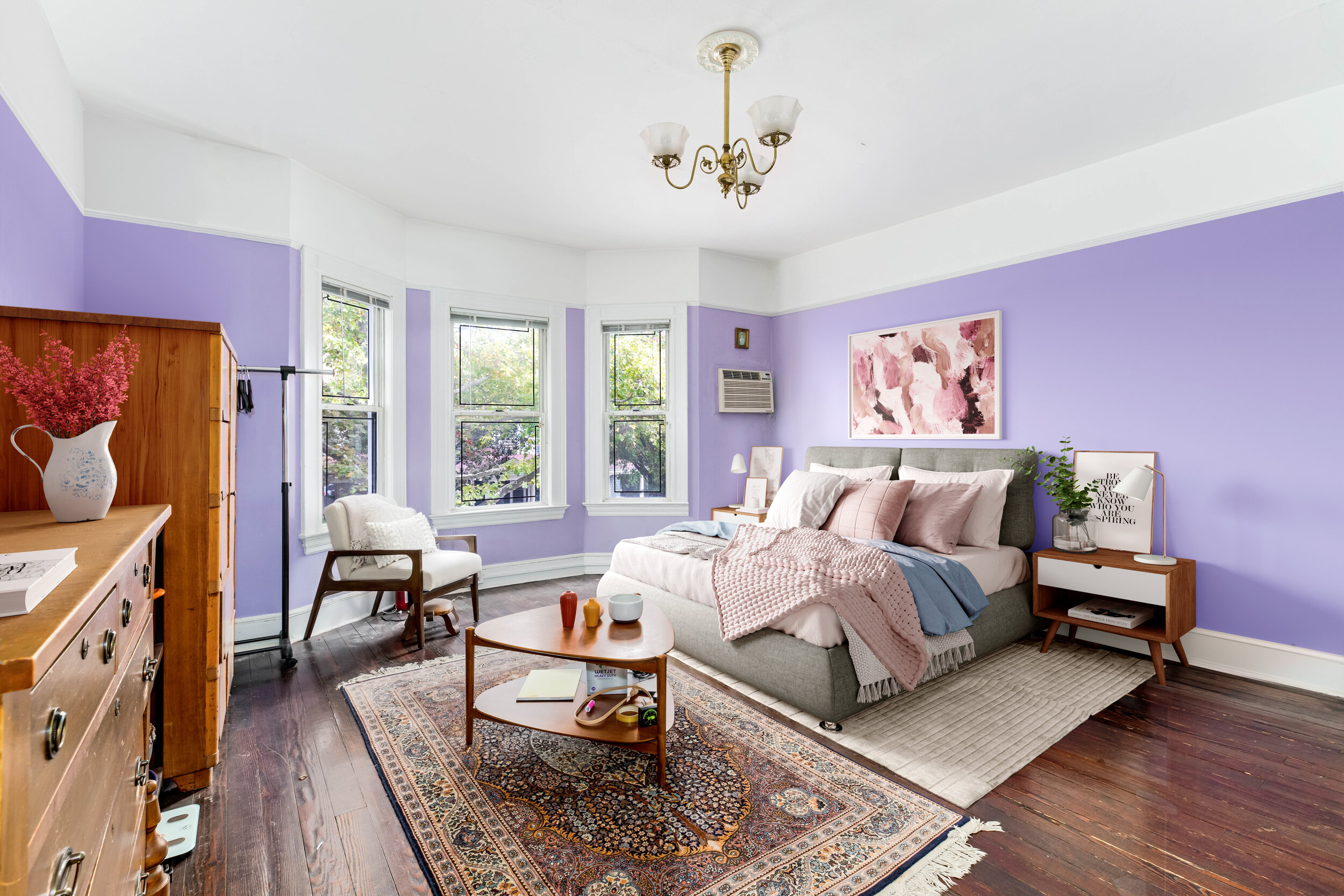
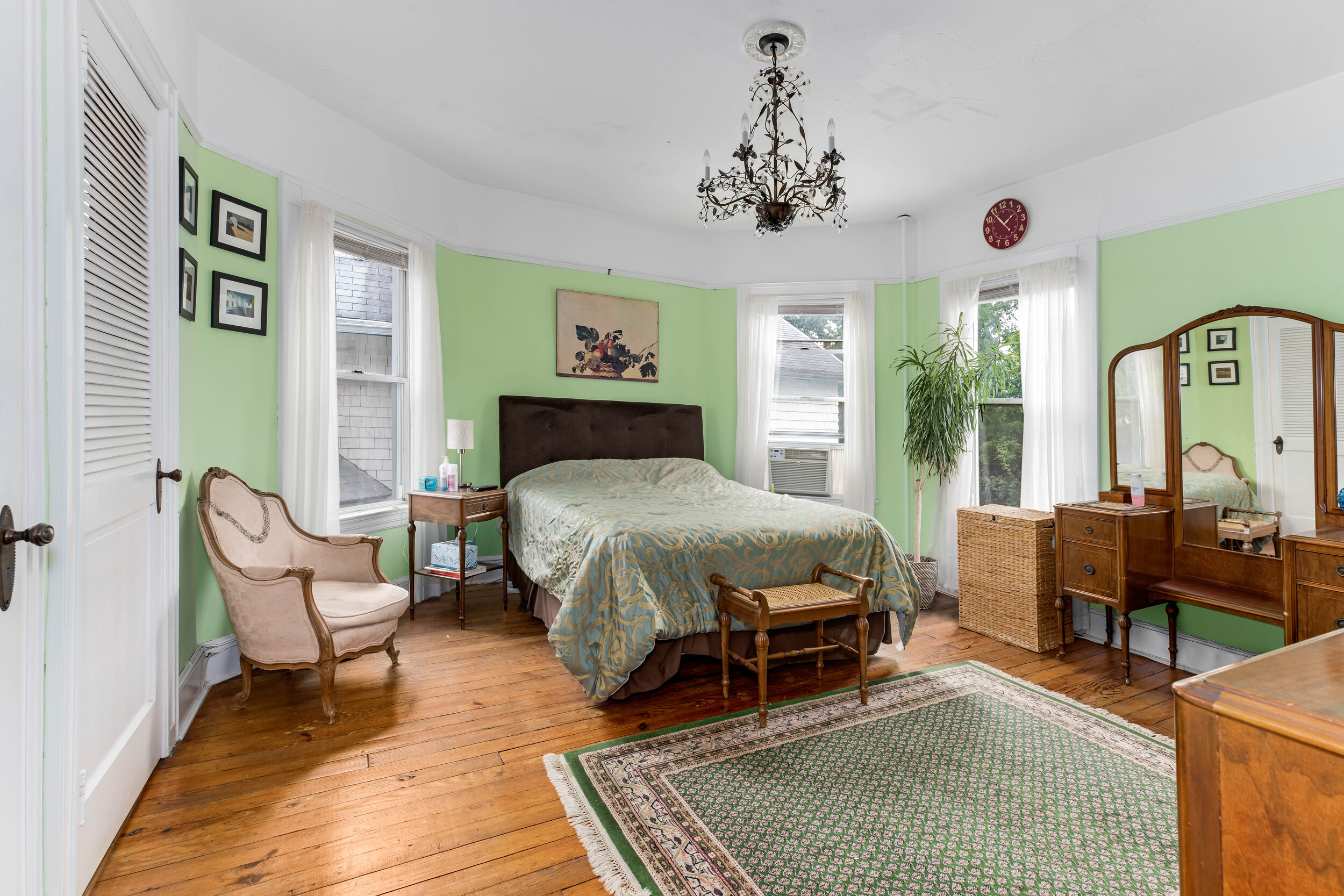


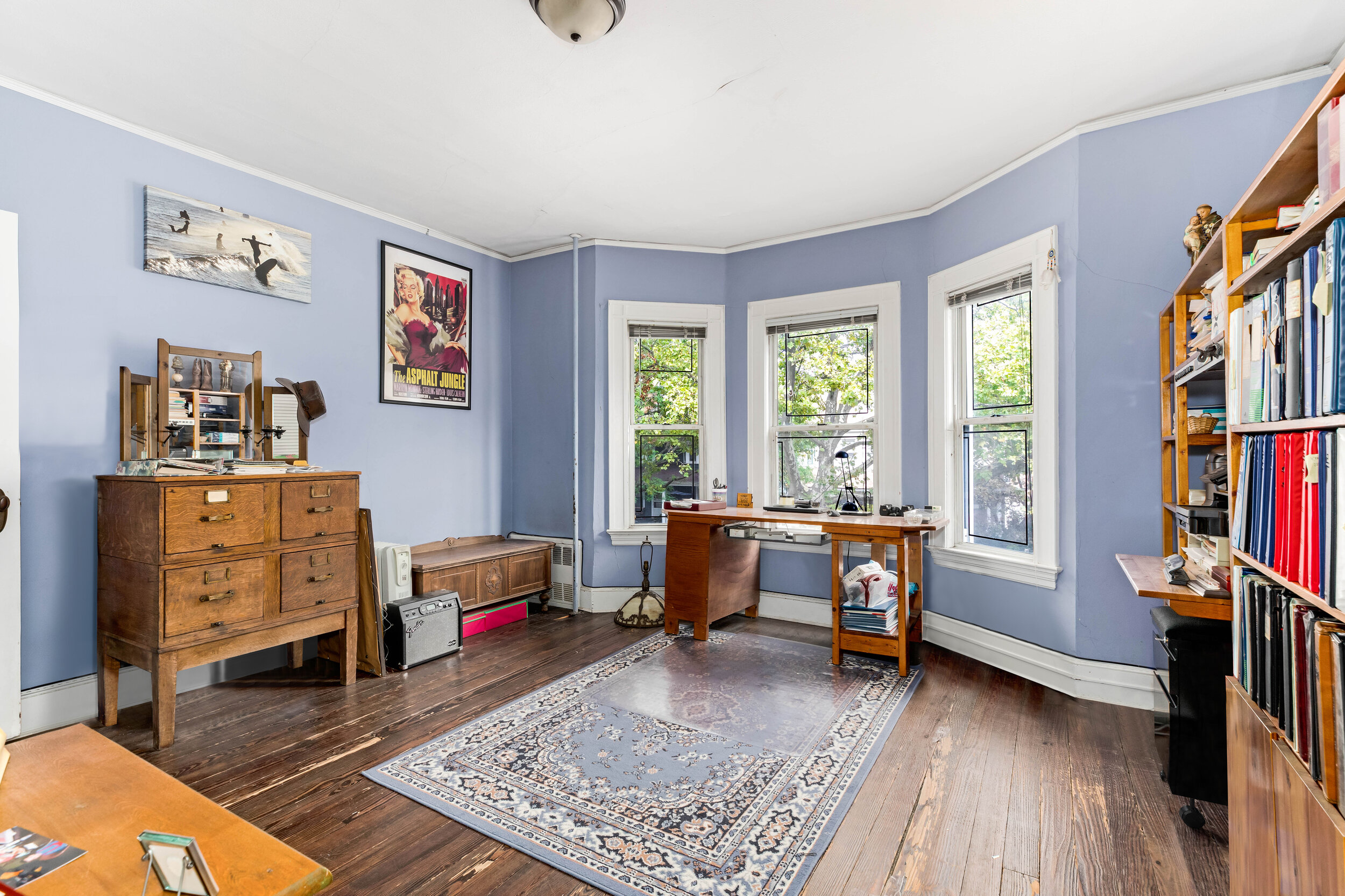
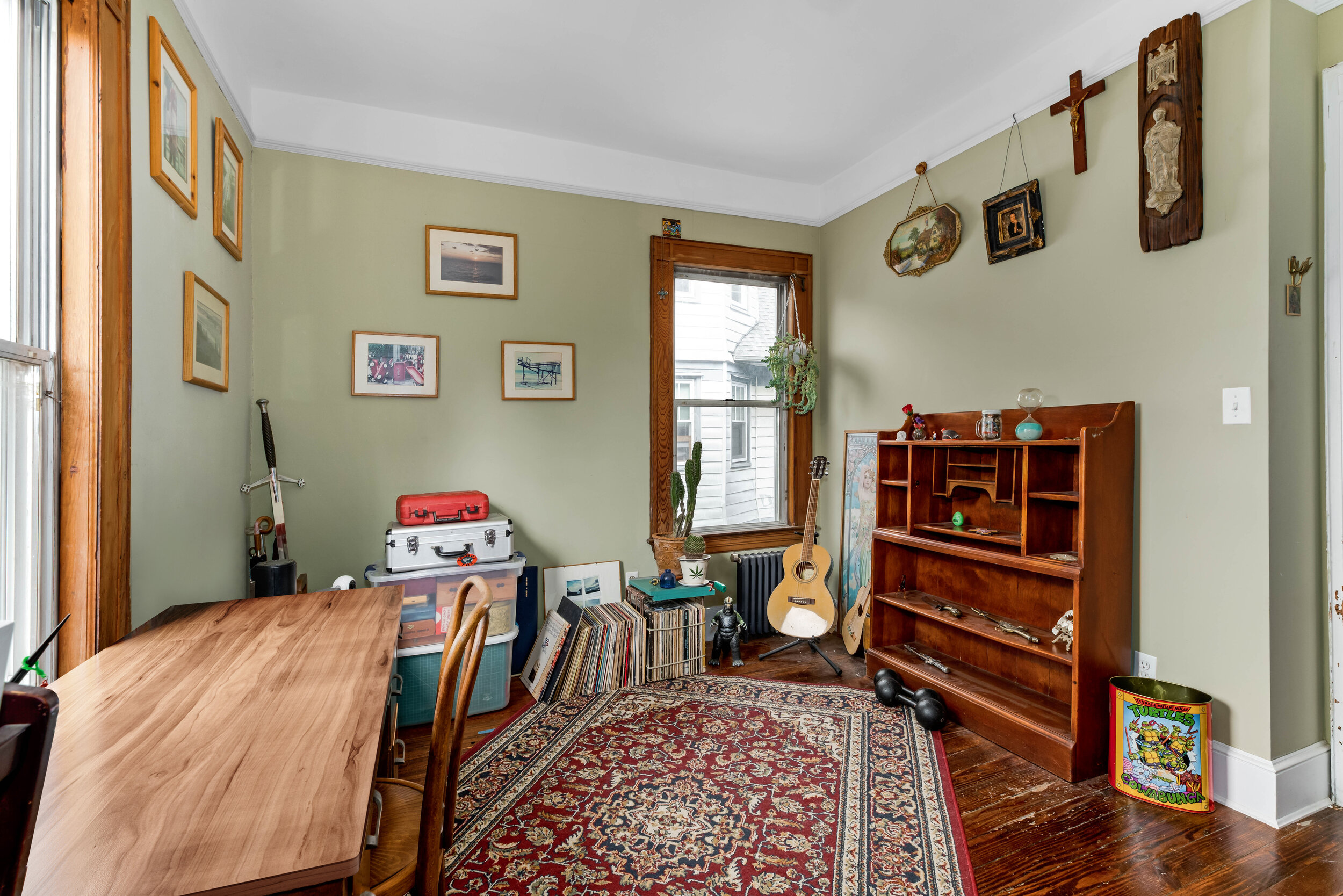

Located in the micro nabe of Beverley Square East, this detached single family home offers parking, bedrooms galore and an interior stuffed with original details. Dating to the early 20th century, 340 East 18th Street also boasts a front porch and a rear yard for plenty of fresh air space.
The Beverley squares, both east and west, were largely developed by T. B. Ackerson, who envisioned carving upscale neighborhoods out of the former farmland of Flatbush. He had competition from other enclaves as multiple developers sought to lure home buyers with the promise of modern living outside of the city.
The Colonial Revival-style No. 340 East 18th Street likely dates to between 1901-1902 when many of the houses in the neighborhood were constructed. It was definitely in place by 1905, when it appears on Sanborn map of the area.
It was designed with generous entertaining spaces on the first floor, including a large foyer, parlor, library and a dining room in addition to an updated kitchen. The upper two floors hold seven bedrooms, a full bath and laundry.
The formal rooms of the first floor are packed with unpainted woodwork, including columned mantels with mirrored overmantels, wood floors with inlaid borders, built-ins and a dining room with beamed ceilings, wainscoting and plate rail. There’s also stained glass to be found.
The rear of the first floor has been modernized with an L-shaped kitchen with white cabinets, room for a table and glass doors looking out out to the rear garden. Adjacent to the kitchen is a full bath and storage.
The original stair with a window seat at the landing leads to the less detail filled upper floors but the bedrooms still have wood floors and simple moldings. Three of the four bedrooms on the second floor have windowed bays. There’s just one full bath shared by the bedrooms but one bedroom boasts an original marble sink and the floorplans show a passthrough with sink in between two other bedrooms. The other full bath in the house is located in the basement.
Out back there’s a wood deck off the kitchen with stairs leading down to a lawn with a raised planting bed. A driveway runs along the side of the house.
The house hasn’t been on the market since 1989. It’s now listed for $2 million with Dylan Hoffman and Andrew T. Corso of Compass. What do you think?
[Listing: 340 East 18th Street | Broker: Compass] GMAP
As Seen On TV: The American Dream NYC - Sutton Place 📺
Watch Dylan’s Segment:
Featuring Hoffman Team Listing:
25 Sutton Place South, Unit 3G
3 Bed | 3 Bath | Co-op | Offered At $3,250,000
Full Episode Below:
As Seen On TV: The American Dream NYC 📺
As Seen On TV: The American Dream NYC
The American Dream is the only TV show that goes against the negative sensationalist style of journalism often seen in media. The American Dream’s mission is to Educate, Empower, and Engage its audience across the country with business leaders, accomplished entrepreneurs, finance experts, and top producing realtors. The show is produced by Ignite Now Media in San Diego, California in conjunction with hundreds of partners, videographers, and studios. Featured Guests: Benjamin Dixon, Matthew Mackay, Dylan Hoffman, Matthew Melinger & Michael Shapot
To subscribe to The American Dream TV YouTube Channel please use the following link: http://tinyurl.com/lv33g4h
Compass Raises Another $370M On A $6.4B Valuation
The real estate market regularly goes through ups and downs, but today comes big news for a startup in the space that has built a platform that it believes can help all players in it — buyers, sellers and those who help with the buying and selling — no matter what stage of the cycle we happen to be in.
Compass — a company that has built a three-sided marketplace for the industry, along with a wide set of algorithms to help make it work — has raised a $370 million round of funding, money that it plans to use to continue expanding geographically (within existing markets in the U.S. such as New York, Connecticut, Philadelphia, Washington, Atlanta, SF and LA and other areas), as well as for more tech and product development. Sources tell me that it’s also now eyeing up an IPO, likely sometime in the next 24 months.
“From day one we knew, when we had just a small amount of people at the company, we had a very clear focus,” co-founder and chairman Ori Allon said in an interview. “We wanted to bring more tech and data and transparency to real estate, and I think it’s paid off.”
Based out of New York, Compass earlier this year established an engineering hub in Seattle run by the former CTO of AI for Microsoft, Joseph Sirosh . It’s continuing to hire there and elsewhere (alongside also making acqui-hires for talent).
The Series G funding — which brings the total raised by Compass to $1.5 billion — is coming in at a $6.4 billion valuation, a huge uptick for the company compared to its $4.4 billion valuation less than a year ago. Part of the reason for that has been the company’s massive growth: in the last quarter, its revenues were up 250% compared to Q2 2018.
The investor list for this latest round includes previous investors Canada Pension Plan Investment Board (CPPIB), Dragoneer Investment Group and SoftBank Vision Fund. Other backers since it was first founded in 2012 have included Founders Fund, the Qatar Investment Authority (a construction and real estate giant), Fidelity and others.
The company was co-founded by Ori Allon and Robert Reffkin — respectively the chairman and CEO, pictured here on the right and left of COO Maelle Gavet. The company first caught my eye because of Allon. An engineer by training, he has a string of notable prior successes in the field of search to his name (his two previous startups were sold to Google and Twitter, which used them as the basis of large areas of their search and discovery algorithms).
In this latest entrepreneurial foray, Allon’s vision of using machine learning algorithms to improve decisions that humans make has been tailored to the specific vertical of real estate.
The platform is not a mere marketplace to connect buyers to real estate agents to sellers, but an engine that helps figure out pricing, timing for sales and how to stage homes (and more recently how to improve them with actual building work by way of Compass Concierge) to get the best prices and best sales.
It also helps real estate agents — it currently works with some 13,000 of them — manage their time and their customers (by way of an acquisition it made of CRM platform Contactually earlier this year). Starting with high-end homes for private individuals, Compass has expanded to commercial real estate and a much wider set of price brackets. Its traction in the market among its three customer bases of realtors, buyers and sellers has also meant that it’s been the subject of around 10 lawsuits from the likes of Zillow (over IP theft from former employees) and Realology (which owns firms like Coldwell Banker and Century21).
There is a wide opportunity for vertical search businesses at the moment. People want more accurate and targeted information to make purchasing decisions; and companies that are in the business of providing information (and selling things) are keen for better platforms to bring in online visitors and increase their conversions.
I understand that this has led to Compass getting approached for acquisitions, but that is not in the blueprint for this real estate startup: the longer-term plan will be to take the company public, likely in the next 24 months.
“It has been incredible to see the growth of our Product & Engineering team, including the addition of Joseph Sirosh as CTO,” said Allon, in a statement. “We are excited to partner with new investors, and deepen our relationship with our existing partners to accelerate our growth and further our technology advancements.”
As Seen In The New York Times: 129 Columbia Heights Blvd. #42
Brooklyn Heights Co-op • $1,300,000 • BROOKLYN • 129 Columbia Heights, No. 42
An 1,100-square-foot, two-bedroom, one-bath with a formal dining room, in a Beaux-Arts elevator building. Scott Sobol, Compass, 917-502-2375; compass.com
Compass Nabs $400M Investment, Valuing The Real Estate Startup at $4.4B
Compass is officially a $4.4 billion brokerage.
The New York-based firm said Thursday it closed another mega-round, raising a $400 million Series F led by SoftBank’s Vision Fund and Qatar Investment Authority. Wellington, IVP and Fidelity also participated in the deal, which gives Compass a total capital raise of nearly $1.2 billion, the company said.
Compass said the latest funding, first reported by Bloomberg, will enable it to accelerate plans to control 20 percent market share in 20 U.S. cities by 2020, and to double down on its technology. The firm, which was founded in 2012, also said it plans to expand internationally.
“Real estate is the largest asset class in the world,” founder Ori Allon said in a statement, “and we are excited to bring Compass technology to international markets.”
News of Compass’ latest funding comes less than a year after Softbank poured $450 million into the company in December 2017, at the time valuing the brokerage at $2.2 billion. That round closely followed a $100 million funding from investors including Fidelity Investments.
With nearly $1 billion in new money over the last year, Compass has been on an unabashed growth spree, scooping up agents and brokerage firms nationwide. (On Thursday, SoftBank also announced a $400 million investment in the iBuying platform Opendoor.)
Over the past year, Compass said it has tripled its agent headcount to 7,000 nationwide. On Thursday, one brokerage head who has lost a substantial number of agents to Compass said the latest round was nothing short of terrifying. “This is going to be a killer for us,” the CEO said.
Last month, Compass told The Real Deal it is on track to hit $35.6 billion in sales volume this year, up from $14.8 billion in 2017. This summer, it picked up Pacific Union International, a $14 billion firm in San Francisco. Compass is also projecting $1 billion in 2018 revenue up from $370 million in 2017.
In addition to brokerage revenue, Compass is banking on new tech products, licensing and other money-making ventures to hit that target.
The firm plans to roll out title and escrow services, and this summer it announced its first tech licensing deal — though the partnership fell apart soon after. Some of the latest tools it has introduced to brokers include a CRM (customer relationship management) system and illuminated real estate signs that feature QR codes.
At $4.4 billion, Compass’ valuation blows other residential firms out of the water. Realogy — the New Jersey conglomerate that owns Coldwell Banker, the Corcoran Group and Sotheby’s International Realty — has a market cap of $2.5 billion. Its stock is down 25 percent since the start of the year, with a closing price of $20 per share on Wednesday.
Compass has stayed tight-lipped about its own plans to go public, but some speculated that the Series F would be the last one before an IPO.
NYT Press: Battery Park City: A Resort-Like Community Built on Landfill
Battery Park City: A Resort-Like Community Built on Landfill
The cost of living may be slightly higher in this landfill neighborhood than elsewhere in Manhattan, but many residents say the benefits outweigh the costs.
By Aileen Jacobson Aug. 15, 2018
Once a landfill and a set of dilapidated piers, Battery Park City has grown during its 50-year history into a vibrant community that one resident recently likened to a resort or a cruise ship, and others to a bucolic suburb.
“It seems like everyone knows everybody,” said Glenn Plaskin, a journalist and author in his 60s who moved into Gateway Plaza, the neighborhood’s first residential complex, 33 years ago. He was looking for an apartment with light, a water view and low rent, he said, when a real estate agent suggested “this place way downtown, where nobody wants to live.”
His first thought when he arrived was, “Where am I?” he said. “It seemed like the middle of nowhere. Being here was like living on a houseboat.”
The area had few amenities or inhabitants at the time, but that has changed dramatically in the years since, in spite of the devastation caused by the attack on the nearby World Trade Center in 2001. These days, the neighborhood is bursting with stores, restaurants, parks and activities,” Mr. Plaskin said. “It’s just booming.”
The resort and cruise-ship analogies are more apt now: “This neighborhood has become affluent,” he said. “There are only pockets of affordability,” including apartments like his, which is rent-stabilized.
“I always say it’s a little bit like cheating to say we live in Manhattan,” said Martha Gallo, who arrived 35 years ago, after her father noticed the waterside community from his hotel window. “It’s more like a suburb. The parks are kept in glorious condition, and it’s well maintained. The streets are clean and there is no graffiti.”
Ms. Gallo, 61, an executive vice president at AIG insurance company and a board member of the Battery Park City Authority, which manages the community, married Chuck Kerner, an investment banker, six years after moving to the area. For $650,000, they bought a two-bedroom, two-and-a-half-bathroom duplex penthouse with a terrace and a fireplace, where they raised two daughters, now 20 and 15. When the children were younger, she said, they belonged to a local sailing club, participated in an annual catch-and-release family fishing day and other free events in the parks, and often visited a duck pond and a park filled with whimsical sculptures by Tom Otterness.
Joanne Hughes, 48, and her husband, Paul Hughes, 50, who works in investment trust at a real estate company, moved to the neighborhood in 2005 because they thought it would be “a good place to raise a family,” she said. They now have two teenage sons and a 5-year-old daughter.
They rented for the first year “to get the feel of the neighborhood,” Ms. Hughes said. “We loved it. Everybody was very friendly.” So they bought a two-bedroom apartment, and when that home started to feel “too tight,” they found a larger place in the neighborhood: a three-bedroom, three-bathroom unit on the 35th floor of a building with views of the Statue of Liberty, for which they paid $3 million.
“The public schools are excellent, and the air is fresh,” said Ms. Hughes, whose sons play soccer in neighborhood fields and walk to the local movie theater. The family eats at restaurants in the sprawling Brookfield Place (formerly known as the World Financial Center) or order pizza from a cafe in their building.
“We have people from all over the world living here,” she said. “The only thing we’re missing is a beach. If we had a beach, I’d never leave.”
What You’ll Find
Battery Park City’s eastern boundary is West Street, and the rest of the neighborhood, from Chambers Street to the Battery, is bounded by the Hudson River. An esplanade wraps around most of the waterfront.
The original plan was to create a 92-acre landfill — mostly with fill excavated during the construction of the World Trade Center — in an area that had been fringed by dilapidated piers, and build a mix of commercial, retail and residential buildings nestled among parks, which now cover 36 acres. In 1968, the Battery Park City Authority was created by the New York State Legislature to manage the area’s development, and by 1980, the first residences were under construction. In 2008, the City of New York leased Pier A and Pier A Plaza, on the southern end, to the Authority, so they are now part of Battery Park City, too. Today there are 30 residential buildings, and no new construction is planned.
“The neighborhood has been developed, and now we have a responsibility to maintain it,” said B.J. Jones, the authority’s president and chief executive. Some of that, he said, involves preventive work on the sea wall and underwater piles that hold the area in place. The authority also has its own security force and a conservancy branch that keeps the area clean.
Free activities — of which there are about 1,000 each year — are expanding, too, Mr. Jones said: “We are investing in diverse programming to make the community welcoming to everyone.”
A major transformation occurred in 2015, when the World Financial Center, a hub for financial services firms, became Brookfield Place, with a greater variety of businesses in its five office towers, and a retail area — a suburban-style mall — comprising 40 high-end stores and six restaurants, including Le District, a French food hall and market. The complex faces the North Cove Yacht Harbor, a particularly lively spot.
What You’ll Pay
Andrew Klima of COMPASS
Monthly costs may be slightly higher than in other areas of the city because of the fees the authority charges, “but a lot of people feel that is a cost they are willing to pay for what they get: the beautiful neighborhood,” said Andrew Klima, a Compass agent. The average sale price of a one-bedrooms in 2013 was $665,475, he said. In 2017 it was $814,278, and this year, through July, it was $865,170.
Several buildings that started as rentals have been converted to condominiums in recent years, said Jessica Weitzman, a Corcoran agent who lives in a condo built in 2006. The Solaire, completed in 2003, is scheduled to convert to condos next year.
On Aug. 9, there were 120 apartments listed for sale on StreetEasy, ranging from $550,000 for a one-bedroom, one-bathroom condo on South End Avenue to $10.995 million for a four-bedroom, five-bathroom penthouse on West Street. Of 129 rentals, the cheapest was $2,900 for a studio on South End Avenue and the priciest, $35,000, was for the four-bedroom West Street penthouse that was also for sale.
The Vibe
Although the area attracts tourists, many residents find it a quiet retreat. “It’s off the grid a bit,” said Dan Cahill, 37, an asset manager who moved into the neighborhood in 2012 with his wife, Alexandra Cahill, 34, a teacher.
He was attracted by the open spaces where he could run or bicycle, he said, and later discovered, after having children, that “the area is also extremely kid-friendly.” Restaurants are welcoming, he said, often supplying crayons, and activities abound.
Governor Nelson A. Rockefeller Park, at the northern end of the neighborhood, is a gathering spot for parents with strollers. Teardrop Park has a water play area and a long slide that ends in a sand pit. Another playground has a house where children may borrow games and toys. Stuyvesant High School, at the northern end, allows residents to pay discounted fees to use its pool, gym and other areas during nonschool hours. (Residents get no advantage, however, in qualifying for the specialized public school.)
Cultural spots include the Museum of Jewish Heritage: A Living Memorial to the Holocaust, on the southern end, in Robert F. Wagner Jr. Park, and the Skyscraper Museum across the street. The Irish Hunger Memorial commemorates the 19th-centruy potato famine with stones from each of Ireland’s 32 counties. Poets House, home to a national archive of 70,000 volumes of poetry, sponsors readings and other programs.
“There’s a waiting list” for plots at the community garden at Albany and West Streets, said Anthony Notaro, who described working on his small plot, for which he pays $20 a year, as one of his favorite activities. Mr. Notaro, 57, who works for a software firm from his apartment, which he bought in 1996, is chairman of Community Board 1, covering the area south of Canal Street.
Karlene Weise, president of the Gateway Plaza Tenants Association, participates in musical events, she said, but sometimes after she returns from her job as a document specialist at J.P. Morgan, she prefers to sit on the esplanade: “I just look at the water and the Statue of Liberty, and after a few minutes, I’m better.”
The Schools
M276, Battery Park City School, in the southern part of the neighborhood, has 802 students in kindergarten through eighth grade. According to the 2016-2017 School Quality Snapshot, 75 percent met state standards in English, compared to 41 percent citywide; 72 percent met state math standards, compared to 38 percent citywide.
At P.S. 89, Liberty School, there are 420 students enrolled in prekindergarten through fifth grade; last year, 79 percent met state standards in English, versus 40 percent citywide, and 85 percent met state math standards, versus 42 percent citywide.
The school shares a building with I.S. 289, Hudson River Middle School, which has 279 students in sixth through eighth grades. It is a screened school, accepting students based on a variety of academic criteria, and only residents of District 2, of which Battery Park City is a part, can apply. On state tests last year, 69 percent met standards in English, compared to 41 percent citywide, and 65 percent met state standards in math, compared to 33 percent citywide.
The Commute
Among the trains that make stops a few blocks east of West Street are the 1, 2, 3, 4, 5, 6, A, C, E, J, R and Z trains. The M9, M20 and M22 buses and a free shuttle bus operated by the Downtown Alliance also make stops in the neighborhood. A new pedestrian underpass starts in the Winter Garden Atrium at Brookfield Place and leads to the Oculus, the mall and transportation hub, designed by Santiago Calatrava, where most of these lines, and the PATH system, converge.
The History
After Sept. 11, 2001, when much of the area was damaged and many people were evacuated, about half the residents left for good. Since then, the community has rebounded and grown to about 16,000 residents, 2,000 more than was predicted a decade ago.
Hello Westchester!
Breaking News:
Our growth continues! We are thrilled to share the news that Compass Westchester is official!
Today, we are making another big step in building Compass. We have signed an agreement to acquire Platinum Drive Realty, a leading boutique brokerage in the market! With the addition of Platinum Drive, Compass Westchester can grow to 100 Agents and five offices strong, and become a top five brokerage in Scarsdale, Larchmont, and Chappaqua.
Platinum Drive shares Compass’ desire to grow beyond what most believe is possible. The company was founded in 2006 and was named one of the Inc. 5000 Fastest-Growing Companies in America in 2014, 2015, 2016 and 2017. WELCOME TO COMPASS
Thrilling News This Morning!
Compass just announced a $450M fundraise from the SoftBank Vision Fund, known for making bold investments in the technology companies transforming our world. With this investment, we will continue to reshape the real estate industry, elevate the client experience, and live out our mission – to help everyone find their place in the world.
Below is the first wave of press coverage on the SoftBank Vision Fund investment in Compass.
TechCrunch | Compass gets $450M from SoftBank; real estate portal now valued at $2.2B
Fast Company | SoftBank’s $450 million investment puts Compass on the global map
Business Insider | A NYC startup that wants to make finding a home easier just raised $450 million at a $2.2 billion valuation
CNBC | Softbank invests $450 million in real estate tech company Compass
Founder and executive chairman Ori AllonCompass, COO Maelle Gavet, and CEO Robert Reffkin.
Real estate startup Compass has raised $450 million from SoftBank at a $2.2 billion valuation.
The money will be used to expand where Compass operates.
Compass, the New York-based startup with the goal of disrupting the real-estate market, has raised $450 million at a $2.2 billion valuation.
The new money, which comes from Japanese conglomerate SoftBank's $100 billion tech fund, will be used to bring the Compass platform to more cities than the 11 areas where it now operates.
“With the support of the SoftBank Vision Fund, we will be able to move quickly to execute our ‘Compass Everywhere’ vision, partnering with top agents and their clients in every major U.S. city," Compass founder Ori Allon said in a statement shared with Business Insider. "Just last week, we launched in Chicago with the number one agent team in the State of Illinois, and we are continuing to gain momentum with top agents everywhere.”
Compass has now raised $775 million to date. And with a more than $2 billion valuation, SoftBank's investment propels the five-year-old company into the upper ranks of New York's most valuable tech startups.
While it employs traditional brokers, the main selling points of Compass are the leveraging of data to improve the efficiency of the real estate business along with a sleek mobile app for buyers and renters.
“Real estate is a huge asset class, but the sector has been relatively untouched by technology and remains inefficient and fragmented,” SoftBank's Justin Wilson said in a statement. “Compass is building a differentiated, end-to-end tech platform that aggregates across diverse data streams to support agents and homebuyers through the entire process, well beyond the initial home search. With disruptive technology and unique data advantages, Compass is well-positioned for future growth in a sector that represents trillions in transaction volume.”
New York Times: The Plight of the Postwar Apartment
Hoffman Team exclusive was recently featured in a fantastic article in The New York Times.
NBC Open House: The Hunt - Harlem Living
Check out our beautiful exclusive being featured on NBC Open House: The Hunt showcasing the sales search of fellow COMPASS agent John McGuinness.
About The Episode:
Scott and Jillian are both already home owners but are looking to buy their first home as a couple. They know they want more space and they want to live in Harlem. But they also have a healthy difference on what kind of place they want. Let's see if broker John McGuinness can find a place in Harlem that’s just right. (Published Saturday, Nov 18, 2017)





